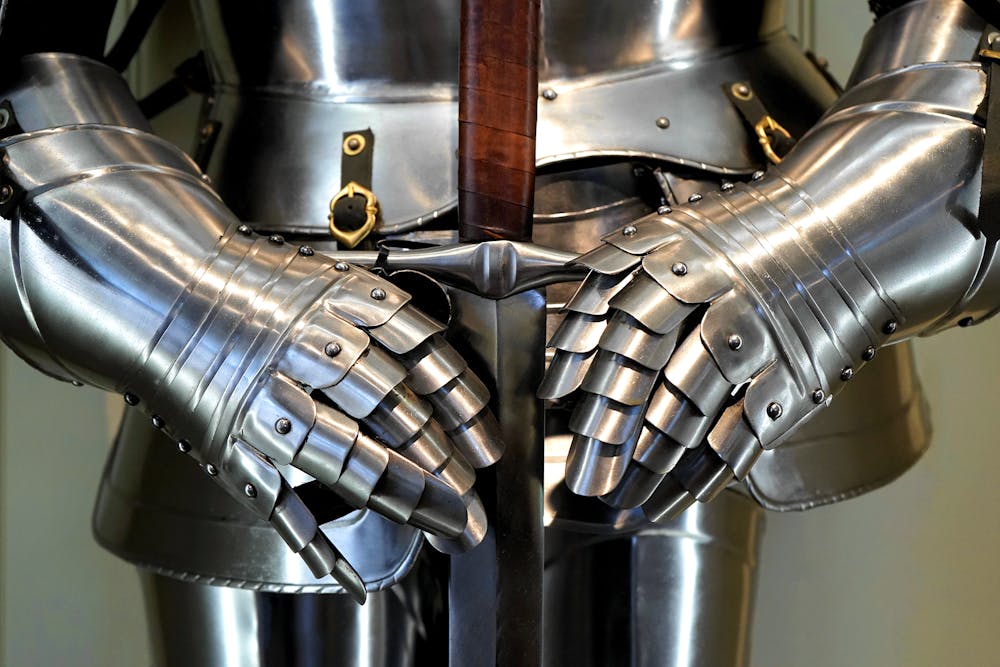Reviews
Saber Sword and Damascus Sword: Icons of History and Craftsmanship

Throughout history, few weapons have captured the imagination quite like the saber sword and the Damascus sword. Both blades stand as testaments to human ingenuity, artistry, and martial necessity. Each carries its own story, one of sweeping cavalry charges and the other of mysterious forging secrets yet together they symbolize the peak of sword-making traditions across cultures and centuries.
The Saber Sword: Swift and Deadly in Motion
The Saber Sword first rose to prominence in the 17th century as cavalry units became central to military strategy. Unlike straight-edged blades, the saber’s curved design allowed soldiers on horseback to deliver slashing strikes with remarkable speed and efficiency. It quickly became a weapon associated not only with practicality but also with prestige, worn by officers and ceremonial guards long after the age of mounted warfare ended.
Its light weight and slightly curved blade offered agility on the battlefield. Where heavy swords demanded brute strength, the saber rewarded precision, timing, and skill. Today, it endures as both a collector’s piece and a symbol of military heritage, celebrated for its blend of functionality and elegance.
Damascus Sword: The Steel of Legends
If the saber sword is admired for its design, the Damascus sword is revered for its material. Emerging from the Middle East, Damascus steel became legendary for its strength, flexibility, and ability to hold an exceptionally sharp edge. The swirling water-like patterns that run along the blade’s surface are as beautiful as they are iconic, giving each piece a distinct personality.
The secrets of forging Damascus steel were closely guarded, and for centuries, blacksmiths across the world attempted and often failed to replicate its qualities. Tales of Damascus swords cutting through armor or even slicing other blades in half only heightened their mythical status. While modern metallurgy has advanced, the allure of the Damascus sword remains rooted in its mystery and historical prestige.
Craftsmanship Across Time
Both swords reflect the genius of their makers. The saber’s craftsmanship lies in its form, designed to complement human movement and military tactics. Damascus, on the other hand, is defined by the process of its steelmaking, an art that fused beauty and performance at a molecular level.
In modern reproductions, artisans strive to honor these traditions. Collectors and martial artists alike value sabers and Damascus blades not just as tools, but as living works of cultural heritage.
Cultural Significance
The saber sword is woven into the fabric of European and Asian military history. From Napoleonic cavalry to samurai adopting saber-like forms, its cultural reach is vast. Similarly, the Damascus sword is inseparable from Middle Eastern history, symbolizing craftsmanship and warfare while also inspiring myths that endure even today.
Both swords also transitioned into symbols of honor and artistry beyond battlefields. Saber swords appear in parades, fencing sports, and ceremonial traditions. Damascus swords, often gifted to rulers and dignitaries, were more than weapons, they were status symbols and artistic masterpieces.
Modern Appeal and Collecting
In today’s world, the fascination with these blades has only grown. Collectors seek authentic saber swords for their historical value, while modern replicas allow enthusiasts to hold a piece of martial history. Damascus swords, with their hypnotic steel patterns, are particularly prized among collectors and artisans.
Contemporary smiths employ advanced methods to replicate Damascus patterns, producing functional and decorative pieces that honor the original mystique. Whether displayed as art, used in martial practice, or preserved as heirlooms, both types of swords represent more than tools of combat, they embody tradition, culture, and human creativity.
Why These Blades Still Matter
What unites the saber sword and Damascus sword is their enduring relevance. Each one tells a different chapter of history—one about mobility and strategy, the other about craftsmanship and steel. Together, they illustrate the timeless balance between utility and beauty.
For martial artists, historians, and collectors alike, these swords remain more than artifacts. They are reminders of the creativity, resourcefulness, and artistry that shaped civilizations. To hold or study them is to connect with a legacy that stretches across centuries and continents.
Conclusion
The Saber Sword and Damascus Sword stand as icons not just of weaponry, but of human achievement. Their stories reveal how necessity can inspire artistry, how function can coexist with beauty, and how culture can be etched into steel. Whether admired for their battlefield efficiency or their artistic designs, these blades continue to fascinate the modern world as much as they did centuries ago.

-

 World1 week ago
World1 week agoEthiopian volcano erupts for first time in thousands of years
-

 Health1 day ago
Health1 day ago8 kittens die of H5N1 bird flu in the Netherlands
-

 Legal6 days ago
Legal6 days agoUtah Amber Alert: Jessika Francisco abducted by sex offender in Ogden
-

 US News5 days ago
US News5 days agoExplosion destroys home in Oakland, Maine; at least 1 injured
-

 Health6 days ago
Health6 days agoMexico’s September human bird flu case confirmed as H5N2
-

 Legal3 days ago
Legal3 days ago15 people shot, 4 killed, at birthday party in Stockton, California
-

 World6 days ago
World6 days agoWoman killed, man seriously injured in shark attack on Australia’s NSW coast
-

 Health5 days ago
Health5 days agoMarburg outbreak in Ethiopia rises to 12 cases and 8 deaths




